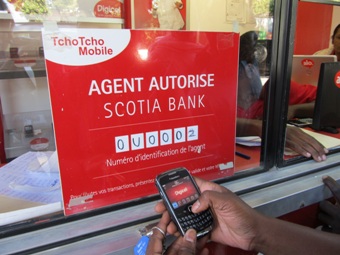Final Report - Mobile Money in Haiti: Potentials and Challenges
Final Report - Mobile Money in Haiti: Potentials and Challenges
- April 20, 2011
In November 2010, Digicel and Voilá both made mobile money services publicly available in Haiti. Building upon our previous research on domestic remittances and financial practices, we returned to Haiti from December to April to identify mobile money’s potentials and challenges given the specific characteristics of the mobile money services offered and the needs of the Haitian population. This report presents our analysis of how the new mobile money services fit into Haiti's existing socioeconomic environment, and how customers are adapting and using the services. We identify six key insights and make recommendations for the development of mobile money in Haiti.
 Insights for now:
Insights for now:
- Me2me transactions have emerged as an important use of mobile money services. A broad spectrum of Haitians is attracted by the ability to store money and withdraw it at different geographical locations. It helps allay problems concerning security, inaccessible infrastructure, and uncertainties that Haitians face in their daily lives.
- Customer experience is a crucial part of why mobile money is a viable and attractive alternative to existing financial services. Fast service, reliability, informality, security, trust, and accessibility are areas in which mobile money can hold an edge over banks and transfer houses. To maximize this edge, mobile money services should be distinct from those offered by other financial institutions.
- Who is an agent? Branding and service provision need to be consistent to ensure repeat business and the growth of a customer base. There is currently wide variation in the kinds of mobile money outlets in operation and the ways they deliver their services. Outlets may need to be incentivized to provide consistency of service.
Insights for the long term:
- Trade may well make up a greater percentage of P2P transactions than domestic remittances (gifts or loans). Use of mobile money for trade is feasible because mobile phone service covers most trade routes adequately. The primary limiting factor in this use will be the wallet size permitted by each mobile money provider.
- Horizontal and vertical integration across Haitian geography, society, and financial landscapes will facilitate mobile money's ability to contribute to both commerce and socioeconomic development.
- Achieving scale across Haiti could be facilitated by adapting providers' local level initiatives (matching customers with mobile money outlets) to create projects that work with existing flows of money across the country.
We are optimistic about mobile money’s future in Haiti and feel that this is a promising opportunity to contribute to achieving socioeconomic development goals. Maximising mobile banking’s potentials will require ongoing dedication, creativity and cooperation between players in the private and public sectors, especially taking into consideration emerging uses of mobile money among different sectors of the Haitian population. Over the next few years we will be watching how mobile
Return to IMTFI Haiti blog feed
Share on:
Related News Items
- Almeida named Dynamic Womxn Faculty Academic Achievement Award recipient
- Congratulations to the political science scholars elected to the 2025 class of the Andrew Carnegie Fellowship Program
- Best high-yield checking accounts in 2025 - May 2025
- Seeds for success
- Supporting the next generation of college students


connect with us: